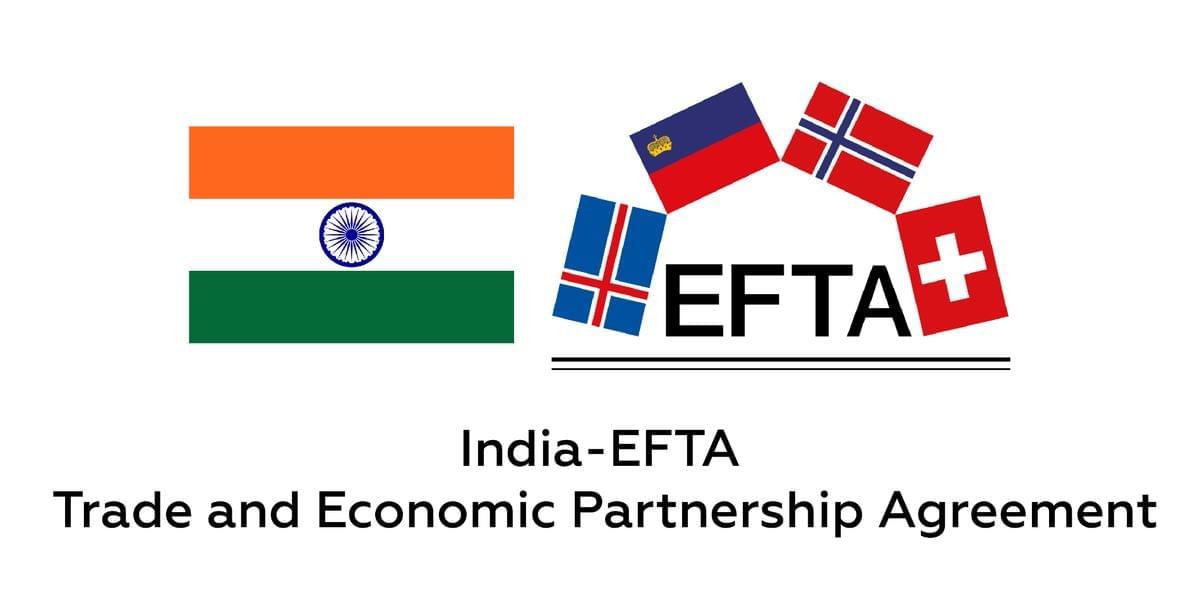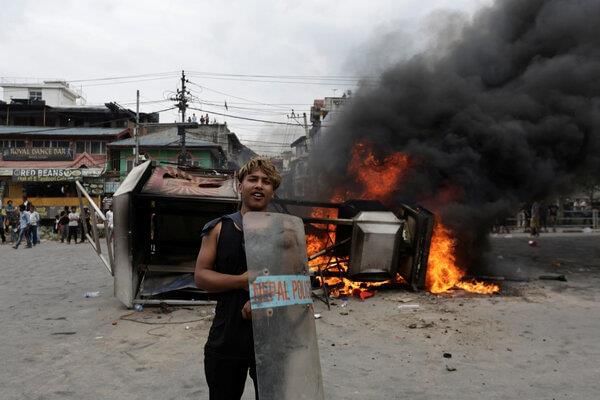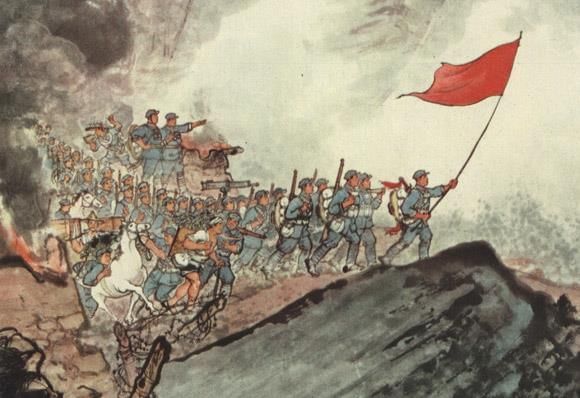UPSC Daily Current Affairs: 10th September 2025 | Current Affairs & Hindu Analysis: Daily, Weekly & Monthly PDF Download
GS2/International Relations
India-EFTA Trade and Economic Partnership Agreement (TEPA) - A Strategic Leap Forward
 Why in News?
Why in News?
The recent signing of the Trade and Economic Partnership Agreement (TEPA) between India and the European Free Trade Association (EFTA), which includes Switzerland, Norway, Iceland, and Liechtenstein, marks India's first comprehensive trade pact with advanced European economies. This agreement represents a significant advancement in India's global trade diplomacy.
Key Takeaways
- Investment of approximately $100 billion over 15 years, aimed at creating up to 1 million direct jobs in India.
- Elimination or reduction of tariffs on 92.2% of tariff lines, impacting 99.6% of India's exports by value.
- Boost for key sectors such as textiles, gems and jewellery, organic chemicals, and industrial goods.
- Commitments from EFTA across various service sectors, enhancing collaboration in numerous fields.
Additional Details
- Investment and Job Creation: EFTA's commitment to invest $100 billion will enhance India's attractiveness as a long-term investment destination.
- Market Access: The agreement will provide duty-free treatment for all non-agricultural products, benefitting multiple sectors.
- Strategic Collaborations: EFTA's strengths in precision engineering, pharmaceuticals, and renewable energy align with India's technological needs.
- Climate Goals: TEPA supports India's aim for net-zero emissions by 2070, offering access to European green finance and technology.
- Nuclear Energy Potential: India's significant thorium reserves present opportunities for developing safe and clean thorium-based nuclear energy.
In conclusion, TEPA transcends a mere trade agreement; it establishes a strategic partnership encompassing trade, investment, technology, and sustainability. By leveraging European expertise and capital alongside India's demographic advantages, TEPA sets a new standard for global cooperation and paves the way for a more energy-secure, innovation-driven, and climate-resilient India.
GS2/Governance
Adaptive Learning in Andhra Pradesh Schools Shows Significant Gains
Why in News?
The Andhra Pradesh Personalised Adaptive Learning (PAL) programme has gained attention following a study led by Nobel laureate Michael Kremer, which found that it has significantly improved students’ math learning outcomes in the region.
Key Takeaways
- The PAL programme tailors educational content to meet individual students’ needs.
- Recent evaluations indicate substantial improvements in math proficiency among students in Andhra Pradesh.
Additional Details
- Adaptive Learning: This educational approach utilizes software that adjusts content and difficulty based on learner performance, creating a customized learning pathway for each student.
- Key features of PAL include:
- Gamification to enhance engagement.
- Continuous assessment that adapts in real-time.
- Utilization of digital devices such as tablets and laptops.
- Emphasis on skill mastery rather than rote memorization.
- The Andhra Pradesh government, in collaboration with ConveGenius AI, initiated PAL in 2018 to combat low foundational numeracy and improve overall math skills among government school students.
The PAL initiative commenced with a Randomised Control Trial (RCT) conducted across 120 government schools between 2023 and 2025, involving approximately 6,800 students from Grades 6 to 9. The treatment group consisted of 30 schools with PAL-equipped labs, while another 30 schools served as the control group.
Key findings from the study revealed that students in the PAL programme achieved learning gains equivalent to 1.9 additional years of schooling compared to their peers. The use of PAL allowed these students to learn at nearly double the rate of those in the control group, with particularly notable gains among younger students and girls.
The PAL model is considered a proof of concept for technology-driven educational interventions in India, with plans to expand its implementation to over 1,200 schools statewide. If successful, it may serve as a national model to address the ongoing learning crisis in Indian education.
GS3/Defence & Security
Exercise ZAPAD 2025
Why in News?
An Indian Armed Forces contingent has recently departed for the Mulino Training Ground in Nizhniy, Russia, to participate in Exercise ZAPAD 2025.
Key Takeaways
- Meaning: "ZAPAD" translates to "West" in Russian; it involves a series of large-scale joint strategic military drills led by Russia and Belarus.
- Origins: The exercise began during the Soviet era with Zapad-77, Zapad-81, and Zapad-84, reflecting the Cold War dynamics.
- Post-Soviet Revival: The drills resumed in 1999 with Zapad-99, partly in response to NATO's operations in Yugoslavia.
- Frequency: The exercise occurs approximately every four years, with major editions held in 2009, 2013, 2017, 2021, and now 2025.
- Geopolitical Significance: It serves to send a strategic message to NATO regarding Russian military readiness.
- Scale: The 2021 edition involved around 200,000 personnel from 17 countries, marking it as one of the largest recent military drills.
Additional Details
- Deterrence: The exercise is designed to send a strategic message to NATO about Russia's military capabilities.
- Allied Assurance: It reassures Russia’s partners and allies of its military strength and operational readiness.
In conclusion, Exercise ZAPAD 2025 is a significant event in the context of international military relations, highlighting the ongoing dynamics between Russia and NATO as well as the strategic partnerships involved.
GS2/Polity
Nepal’s Gen Z Protests
 Why in News?
Why in News?
Unprecedented protests erupted across Nepal on September 8, 2025, following the government's ban on major social media platforms. Initially peaceful demonstrations by thousands of youths turned violent, resulting in at least 19 fatalities and over 400 injuries. Protesters stormed Parliament and targeted the homes of politicians, leading to curfews in Kathmandu and other cities. As the agitation intensified, Prime Minister K.P. Sharma Oli resigned amid mounting pressure.
Key Takeaways
- Protests were initiated by Generation Z youth, aged 16-25.
- Protesters expressed anger over corruption, nepotism, and governance failures.
- The immediate trigger for protests was the government's ban on 26 major social media platforms.
- India is closely monitoring the situation due to its implications for regional stability.
Additional Details
- Generation Z: This demographic, born between 1996 and 2012, comprises 20.8% of Nepal's population and 90% of the 30 million internet users. Frustrated with political corruption and lack of opportunities, they have taken to the streets.
- Corruption and Nepotism: The youth's anger is fueled by the opulent lifestyles of politicians' children, often referred to as “Nepo Babies” and “Nepo Kids,” which has become a point of contention online.
- Immediate Trigger: The government’s ban on social media platforms, seen as a suppression of expression, intensified frustrations among the youth.
- The protests escalated to mass demonstrations, resulting in police violence and numerous casualties, marking a significant uprising in years.
- Despite fulfilling the protesters' initial demand to lift the social media ban, broader issues such as corruption and inequality remain unaddressed.
The situation in Nepal reflects a deep-seated discontent with the political structure, prompting concerns about the future of democracy in the country. The protests, driven by disillusioned youth, highlight the urgent need for political reform and accountability to prevent further unrest.
GS3/Science and Technology
Regulation of Biostimulants in India
Why in News?
India has established a comprehensive regulatory framework for biostimulants, positioning itself among a select group of countries with specialized oversight in this area.
Key Takeaways
- Biostimulants are defined as substances or microorganisms that enhance plant processes, improving aspects such as nutrient uptake, growth, yield, crop quality, efficiency, and stress tolerance.
- They are distinct from pesticides or plant growth regulators, which are governed by the Insecticides Act of 1968.
- As of now, only 146 products have been formally recognized under the Fertilizer Control Order (FCO).
Additional Details
- Definition: According to Clause 20C of the Fertilizer Control Order (FCO), 1985, biostimulants comprise substances or microorganisms aimed at stimulating plant processes.
- Categories: These include botanical extracts (like seaweed), protein hydrolysates, amino acids, vitamins, biochemicals, antioxidants, anti-transpirants, humic and fulvic acids, cell-free microbial products, and live microorganisms (excluding biofertilizers and biopesticides).
- Regulation Timeline:
- Before 2021: Approximately 30,000 unregulated products were available in Indian markets.
- February 2021: Biostimulants were included under FCO; a provisional registration system (G3 certificates) was introduced with around 8,000 products approved temporarily.
- Current Status: Only 146 products have been formally notified in Schedule VI.
- Key Amendments (2021–2025):
- Biostimulants are now legally recognized under FCO.
- In 2023-24, provisional validity was extended to prevent disruption.
- Live microorganisms (excluding biofertilizers/biopesticides) were added as a recognized category.
- The pesticide residue limit increased from 0.01 ppm to 1 ppm.
- Stricter quality testing, labelling, and safety standards have been implemented.
- The provisional registration system has been discontinued.
- Significance:
- Protects farmers from fraudulent or unproven products.
- Promotes validated indigenous products aligned with the Atmanirbhar Bharat initiative.
- Establishes standards for quality, safety, and labelling through official notifications.
- Makes India one of the few countries with a dedicated biostimulant law, ensuring a balance between farmer welfare, environmental safety, innovation, and regulation.
In conclusion, the establishment of a regulatory framework for biostimulants marks a significant step toward ensuring the quality and safety of agricultural inputs in India, fostering innovation and protecting farmers.
UPSC 2013 Question: Consider the following organisms:
1. Agaricus
2. Nostoc
3. Spirogyra
Which of the above is/are used as biofertilizer/biofertilizers?
Options: (a) 1 and 2 (b) 2 only* (c) 2 and 3 (d) 3 only
GS2/Polity
Decisive Step: Including Aadhaar as the 12th Document for Voter Verification
Why in News?
The right to vote is a fundamental element of citizenship in a democracy. However, procedural rigidity in updating electoral rolls has led to the exclusion of eligible voters. The Supreme Court's recent intervention in Bihar's Special Intensive Revision (SIR) exercise mandated the inclusion of Aadhaar as one of the 12 acceptable documents for voter verification, addressing the issue of over 65 lakh voters being removed from the draft rolls.
Key Takeaways
- The Supreme Court's decision ensures that electoral processes remain inclusive and do not exclude genuine voters.
- Aadhaar's inclusion as a verification document prevents mass disenfranchisement, especially among marginalized groups.
Additional Details
- Judicial Clarity: The Supreme Court rejected the Election Commission of India's (ECI) argument that Aadhaar serves only as proof of residency, noting that many accepted documents do not conclusively establish citizenship.
- Preventing Mass Exclusion: With 90% of Bihar's population holding Aadhaar, excluding it would disenfranchise many eligible voters, particularly the poor and marginalized.
- Correcting Anomalies: Statistical analyses revealed that women and migrants were disproportionately affected by the exclusion process.
The Supreme Court's ruling on Aadhaar verification for voters is a significant step towards ensuring electoral inclusivity. It reflects the need to balance accuracy in voter rolls with the imperative of making democratic participation accessible to all citizens.
GS2/International Relations
Universal Postal Union (UPU)
Why in News?
At the 28th Universal Postal Congress held in Dubai in 2025, the Union Minister for Communications announced the launch of the Unified Payments Interface (UPI)- UPU Integration Project, marking a significant step in enhancing international postal services through digital innovation.
Key Takeaways
- The UPU is a specialized agency of the UN focused on international postal cooperation.
- India has been a member of the UPU since 1876 and is a key player in global postal innovation.
- The UPI–UPU integration aims to transform postal services by incorporating digital payments.
Additional Details
- Overview: The UPU serves as the primary forum for international postal cooperation and was established by the Treaty of Bern in 1874, making it the second oldest international organization.
- Membership: As of 2025, the UPU has 192 member countries, with the ability for any UN member state to join automatically and non-UN states requiring two-thirds approval from existing members.
- Structure:The UPU operates through several bodies:
- Supreme Authority: Meets every four years to set policies.
- Council of Administration (CA): Supervises activities and regulatory issues between Congress sessions.
- Postal Operations Council (POC): A technical body composed of 48 elected members.
- International Bureau: Acts as the secretariat providing logistical and technical support.
- Functions: The UPU coordinates postal policies, sets rules for international mail exchanges, and acts as an advisory and technical support agency for postal systems globally.
The integration of UPI with UPU is significant for several reasons: it enhances India's leadership in digital payment innovation, positions the country as a hub for low-cost remittance solutions, and allows the global postal system to offer digital financial services. This integration ultimately enables fast, affordable, and secure cross-border remittances for migrants, reducing their reliance on costly traditional channels.
Matching Exercise
Match List I with List II and select the correct answer using the codes given below:
| A) United Nations Development Programme (UNDP) | 1. Nairobi |
| B) United Nations Environment Programme (UNEP) | 2. Vienna |
| C) United Nations Industrial Development Organization (UNIDO) | 3. Berne |
| D) Universal Postal Union (UPU) | 4. New York |
Options: (a) 2 3 4 1 (b) 4 1 2 3 (c) 2 1 4 3 (d) 4 3 2 1*
GS1/History & Culture
Decoding the Harappan Language: Govt Meet Planned
Why in News?
The Union Ministry of Culture will host a conference in New Delhi from September 11 to 13, 2023. This event will bring together archaeologists, scientists, and experts from various fields to discuss the undeciphered Harappan script, a mystery that has puzzled researchers since its discovery in the 1920s. The conference is organized by the Indira Gandhi National Centre for the Arts (IGNCA), which operates under the Culture Ministry.
Key Takeaways
- The Harappan script has remained undeciphered since its discovery.
- The Indus Valley Civilization flourished between 2600–1900 BCE across present-day Pakistan and northwest India.
- Scholarly debates continue regarding the nature, linguistic roots, and total number of signs in the script.
Additional Details
- Nature of the Inscriptions: Indus Valley inscriptions are found on seal stones, terracotta tablets, and occasionally on metal. They often feature a mix of pictograms along with animal or human motifs. Scholarly estimates of the number of signs in the script vary significantly.
- Debates on Linguistic Roots: The script's linguistic base is contentious, with some scholars connecting it to Brahmi, while others argue against this. This lack of consensus highlights the complexity of deciphering the script.
- Competing Theories: Various theories link the script to languages such as Sanskrit, Proto-Dravidian (Gondi), and Santali, reflecting the diverse scholarly perspectives.
The upcoming conference will showcase differing conclusions from various papers, further emphasizing the mysteries surrounding the undeciphered language of the Indus Valley Civilization. The search for a breakthrough in decoding the Harappan script is not merely an academic endeavor; it is also influenced by political and cultural narratives within India. For example, Tamil Nadu's Chief Minister M.K. Stalin has proposed a $1 million reward for anyone who can credibly decipher the script, which could have significant political implications.
GS1/Indian Society
Langkhon Festival of Assam
 Why in News?
Why in News?
Recently, the Tiwa tribesmen celebrated the Langkhon festival in Umsowai village, located in the Karbi Anglong district of Assam. This festival marks an important event in the cultural calendar of the Tiwa community.
Key Takeaways
- The Langkhon festival is a pre-harvest thanksgiving celebration.
- It is traditionally celebrated in October to November, just before the Rabi crop season.
Additional Details
- Core Belief: The festival involves the worship of bamboo, which is seen as a symbol of prosperity and sustenance in Tiwa culture.
- Deities: Special prayers are offered to Ramsa Devota and other local gods, seeking protection for crops, welfare for families, and prosperity for the village.
- Ritual Practices: These include offerings, sacrifices, and prayers intended to drive away pestilence and evil forces, ensuring a good paddy harvest.
- Duration: The festival is celebrated for 2 to 4 days, encouraging active community participation.
- Traditional Dances: Cultural highlights include the Langkhon dance, Moinari Khanthi, and Yangli.
- Folk Songs: Integral songs such as Lo Ho La Hai (related to naming, weddings, and harvests) and Lali Hilali Lai (associated with weddings) are performed during the festival.
- Games & Sports: Local games like Plasele and Sam Kava are organized, which help strengthen community bonds.
The Langkhon festival not only serves as a vital cultural observance for the Tiwa people but also reinforces community ties and celebrates agricultural abundance.
[UPSC 2018]
Consider the following pairs: Tradition | State
- 1. Chapchar Kut festival — Mizoram
- 2. Khongjom Parba ballad — Manipur
- 3. Thong-To dance — Sikkim
Which of the pairs given above is/are correct?
- Options: (a) 1 only (b) 1 and 2* (c) 3 only (d) 2 and 3
GS3/Science and Technology
The Long March Ahead to Technological Independence
 Why in News?
Why in News?
On August 15, 2025, India marked its 79th Independence Day, reflecting not only on political freedom but also on the crucial need for technological sovereignty. In an increasingly interconnected world, true independence now includes the ability to manage and trust the digital systems that influence all facets of national life. Without this sovereignty, India risks merely exchanging one form of dependence for another.
Key Takeaways
- The nature of global conflict has evolved; modern wars are now fought in cyberspace.
- India's reliance on foreign technology poses significant national vulnerabilities.
- Achieving technological sovereignty requires a collective effort from India's IT professionals.
- Hardware independence is even more challenging than software sovereignty.
Additional Details
- Geopolitical Context: The current global landscape sees critical infrastructure, such as banks and power grids, heavily dependent on foreign-controlled technology, creating risks for national security.
- Path to Autonomy: India must develop indigenous software and hardware capabilities, focusing on open-source solutions and fostering a collaborative environment.
- Social Movement: A renewed commitment to the open-source movement is necessary, rallying both professionals and citizens to support homegrown software initiatives.
- Implementation Focus: Establishing mission-oriented programs that prioritize practical implementation of essential digital infrastructure is crucial for achieving self-sufficiency.
In conclusion, as India navigates the complexities of technological dependence, it stands at a pivotal crossroads. The pursuit of independence in technology is not merely an option but a necessity for ensuring national security and economic resilience. The journey towards technological sovereignty will demand collective will and sustained effort, echoing the historical struggles for political independence.
|
51 videos|5377 docs|1138 tests
|
FAQs on UPSC Daily Current Affairs: 10th September 2025 - Current Affairs & Hindu Analysis: Daily, Weekly & Monthly
| 1. What is the significance of the India-EFTA Trade and Economic Partnership Agreement (TEPA) for India? |  |
| 2. How has adaptive learning in Andhra Pradesh schools impacted student performance? |  |
| 3. What is Exercise ZAPAD 2025, and what are its objectives? |  |
| 4. What were the main reasons behind the Gen Z protests in Nepal? |  |
| 5. What is the significance of including Aadhaar as the 12th document for voter verification in India? |  |





















